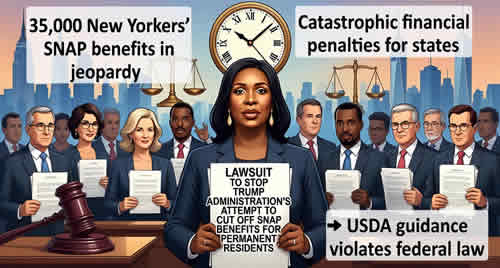New York City Mayor Eric Adams and New York Yankees All-Star CC Sabathia have opened the $11 million “Harlem Field of Dreams,” a 150,000-square-foot multi-sport synthetic turf complex at Brigadier General Charles Young Playground in Harlem, representing a high-impact public-private investment in urban infrastructure and youth development. Funded through approximately $7.5 million in law enforcement asset forfeiture dollars, complemented by contributions from the PitCCh In Foundation, Major League Baseball and the MLBPA Youth Development Fund, the NFL Foundation Grassroots Program, the Cal Ripken Sr. Foundation, the Manhattan Borough President, and the New York City Council, the project advances the Adams administration’s strategic priorities around public safety, community engagement, and equitable access to quality recreational assets. The upgraded facility, coupled with free “Saturday Night Lights” youth programming, is designed to reduce crime risk factors, strengthen community–law enforcement relationships, and enhance long-term social and economic outcomes for Harlem residents, while honoring the legacy of Brigadier General Charles Young and the historic “Harlem Hellfighters” regiment.
Mayor Adams, Yankees All-Star CC Sabathia Open $11 Million “Harlem Field of Dreams” Renovated Athletic Field at Historic Harlem Brigadier General Charles Young Playground
– New York City Mayor Eric Adams was today joined by New York City Department of Parks and Recreation (NYC Parks) Commissioner Iris Rodriguez-Rosa, New York Yankees All-Star CC Sabathia, and members of the Harlem community to celebrate the $9 million transformation of a dilapidated dirt field at Brigadier General Charles Young Playground in Harlem into a state-of-the-art 150,000 square foot multi-sport synthetic turf field, also known as the “Harlem Field of Dreams.” The plan for the now completed project was first announced in Mayor Adams’ 2025 State of the City address earlier this year.
This revitalization project is a key component of a collaborative policing strategy led by the Adams administration, city agencies, and local community-based organizations aimed at transforming the relationship between communities and law enforcement. It builds on the administration’s upstream approach to public safety in New York City, which invests in free programming to keep young people safe and engaged when not in school. By focusing on youth development and violence prevention initiatives, the Adams administration continues to invest in a safer and more connected future for everyone — already contributing to a significant reduction in major crimes across the five boroughs, especially in shootings and homicides.
“If you build it, they will come, and today, we are announcing the completion of the ‘Harlem Field of Dreams’ as we make children’s dreams come true,” said Mayor Adams. “This $11 million project not only fulfills another one of our State of the City commitments by transforming a once-dilapidated field into a vibrant and enriching space where more than 800 young people can play baseball, football, soccer, and lacrosse, but also upholds our promise to making the smart, upstream investments that prevent crime in the first place. Today, we are giving hundreds of families both a safe place to send their children and an outside space for them to grow in as we continue to make New York City the best place to raise a family.”
“Today, we are proud to officially open the newly renovated athletic field at Brigadier General Charles Young Playground. The ‘Harlem Field of Dreams’ is now a reality — a space where Harlem’s young people and families can come together, play, and thrive,” said NYC Parks Commissioner Rodriguez-Rosa. “With a new synthetic turf field that supports multiple sports and expanded community programming, we are not only providing state-of-the-art facilities, but also creating lasting opportunities for health, connection, and growth. By honoring the legacy of Brigadier General Charles Young, this field will continue to inspire future generations for years to come.”
“Giving back has always been at the heart of everything I do,” said CC Sabathia, founder, PitCCh In Foundation. Through the PitCCh In Foundation, we’re proud to support spaces that empower young people to dream, grow, and thrive. This field represents opportunity, resilience, and community—values that shaped me growing up and continue to inspire me today. New York has become my second home, and I’m honored to help build brighter futures right here.”
The newly renovated athletic field at Brigadier General Charles Young Playground now accommodates five sports — baseball, softball, soccer, football, and lacrosse. The upgrades to the park include improved drainage and water detention, a new synthetic turf surface, drinking fountains, fencing, backstops, benches, dugouts, and a sports mister.
The $11 million project was funded through approximately $7.5 million in law enforcement asset forfeiture funds from the New York /New Jersey High Intensity Drug Trafficking Area program, in partnership with the New York City Police Department and the New York City Police Foundation, along with contributions from former New York Yankees pitcher CC Sabathia’s PitCCh In Foundation, Major League Baseball and the Major League Baseball Players’ Association Youth Development Fund, the NFL Foundation Grassroots Program , the Cal Ripken Sr. Foundation, the Manhattan Borough President’s Office, and the New York City Council.
The renovation builds on earlier improvements made by the Adams administration in 2023, including new asphalt and fencing for the main basketball court, repairs and new coatings for three basketball courts, and the conversion of one court into a soccer pitch. The field house bathrooms are also set to be upgraded with $2.5 million in funding provided by the Mayor’s Office, the City Council, and the Manhattan Borough President’s Office.
In addition to the capital improvements, free youth sports programming will be offered on the new field through the New York City Department of Youth and Community Development’s Saturday Night Lights program. This initiative gives young people safe spaces to play, while building trust between law enforcement and communities — helping youth develop skills and relationships that will support their future success.
The project reflects the Adams administration’s holistic approach to public safety, which begins with investing in programs and opportunities that keep young people safe and engaged. Last year, Mayor Adams announced the city’s first indoor baseball center in Washington Heights to provide year-round training, launched a new Saturday Night Lights website to better connect families with free sports programming, and pledged $163 million over five years to expand some of the city’s most successful youth programs in his State of the City address earlier this year. Mayor Adams also committed to opening more schoolyards in underserved neighborhoods for after-school, weekend, and summer use — ensuring that thousands more New Yorkers are within a 10-minute walk of safe, supportive spaces to play.
About Brigadier General Charles Young:
General Charles Young was born into slavery on a Kentucky plantation in 1864. A year later, his family escaped and settled in the abolitionist town of Ripley, Ohio. Young went on to become the third Black graduate of the United States Military Academy at West Point and served over 30 years in the U.S. Army. His career included historic appointments as the first Black national park superintendent, the first Black military attaché, and the first African American to reach the rank of colonel, making him the highest-ranking Black officer in the Army until his death in 1922.
In 1917, the U.S. Department of War forcibly “medically retired” Young, halting his promotion to general in response to resistance from white officers. To demonstrate his fitness for duty, the 53-year-old Young undertook a 497-mile horseback ride from his home in Ohio to Washington, D.C., though his appeal was unsuccessful. In 2022 — 100 years after his death — Charles Young was posthumously promoted to Brigadier General by the U.S. Department of Justice, recognizing his exemplary service and contributions to breaking racial barriers.
The Brigadier General Charles Young Playground in Nort Central Harlem is located just north of the 369th Regiment Armory, home to the “Harlem Hellfighters,” an African American regiment that saw more combat than any other unit during World War I and was one of the most decorated in the Army. The playground and landmarked armory together celebrate African American military heritage.
“Local Initiative Support Corporation’s partnership with the NFL Foundation and the New York Jets is devoted to increasing the quality, safety and accessibility of fields and play spaces. The Brigadier General Charles Young Park is essential to the health and sustainability of youth and families in the Harlem community,” said Beverly Smith, vice president, sports and youth development, Local Initiative Support Corporation. “For more than 25 years, our partnership with the NFL Foundation has resulted in over 450 new and improved recreation facilities across the country that are serving generations of neighborhood youth and communities.”
“Brigadier General Charles Young Field holds extra significance as it is the 125th Youth Development Park opened by the Cal Ripken, Sr. Foundation across the country,” said Cal Ripken, Jr., vice chairman, Cal Ripken Sr. Foundation. “I cannot believe how much of an impact the foundation named for our father has made. This is only accomplished through relationships with other organizations that share a passion for helping kids. Thank you to the Manhattan District Attorney’s Office, the New York City Department of Parks and Recreation, and the Parks Capital team for making sure that this field was not only built but will continue to be a resource for New Yorkers in the years ahead.”
“When we invest in our young people, we invest in a safer future for all New Yorkers,” said Manhattan District Attorney Alvin Bragg. “I am proud to celebrate the culmination of this years-long effort to make Brigadier General Charles Young Field a place where young New Yorkers can play sports, make friends, and be mentored by caring adults in a safe and beautiful space. My office was proud to contribute to this renovation and to work alongside the many public servants and Harlem leaders that made today a reality.”
December 2, 2025 Manhattan, New York
Sources: NYC.gov , Big New York news BigNY.com
Midtown Tribune news











